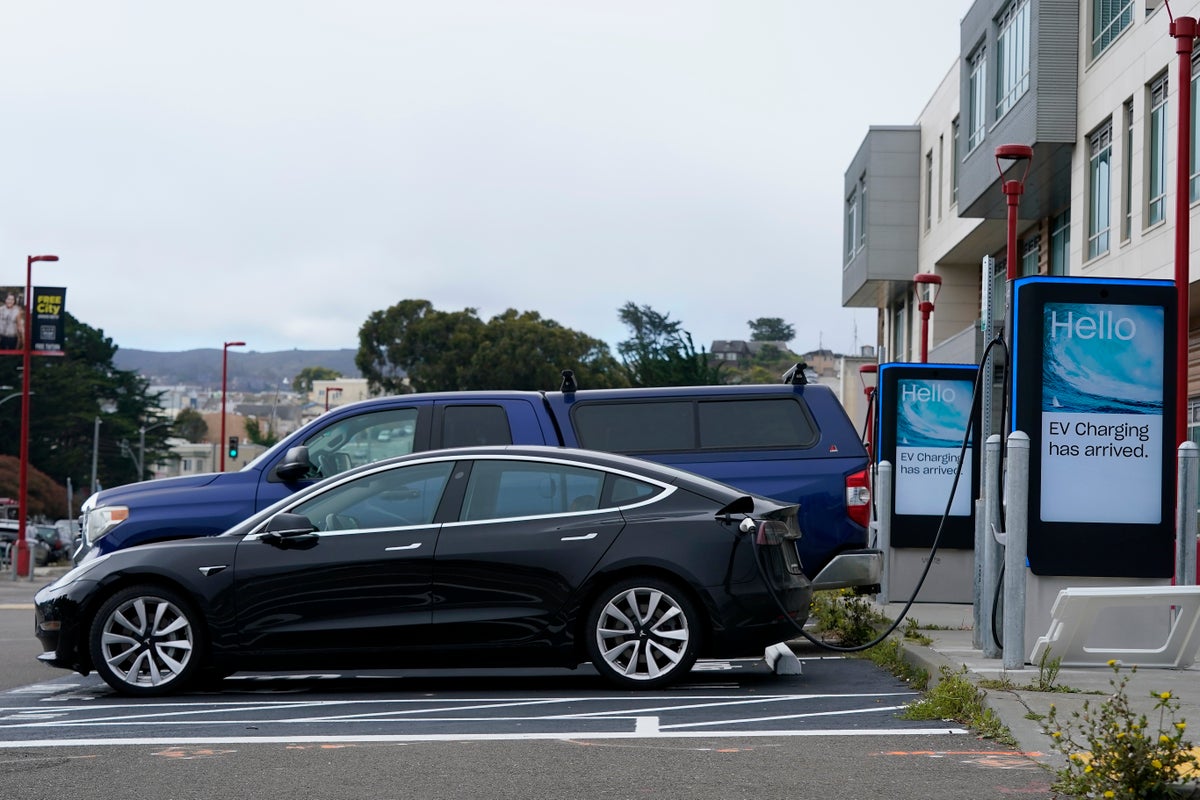
California will require all new cars, trucks and SUVs sold in the state to run on electricity or hydrogen by 2035 in an ambitious move away from gasoline-powered vehicles and the pollution they emit.
The requirements come in phases starting in 2026, and it will take 13 years for them become fully effective. But there are many challenges to meeting them.
EVs now cost substantially more than gas-powered vehicles. There are shortages of precious metals needed for their batteries. The U.S. has little battery manufacturing capacity.
But a lot can change in 13 years. Here's what we know about the problem areas and what's being done about them:
___
WILL AUTOMAKERS BE ABLE TO MAKE ENOUGH ELECTRIC VEHICLES?
More than likely. During the first half of this year, electric vehicle sales accounted for about 15% of California's new vehicle market. New vehicle sales in the state normally run around 2 million per year. That's roughly a 1.5 million difference that has to be made up by 2035. But almost every day, automakers are announcing new EV models, battery factories and assembly plants. Ford, General Motors, Toyota, Hyundai-Kia, Stellantis and VinFast have announced plans for 10 U.S. battery plants.
“New plants are coming in and old plants are being converted," said Sam Fiorani, vice president of AutoForecast Solutions. “The plans are in place for a large amount of vehicles being ready for the U.S. and global markets.”
The big ifs, though, are whether there will be enough precious metals, such as lithium, to make the batteries, and whether EV prices will come down quickly enough. Laurie Holmes, senior manager of government affairs for Kia, told California officials Thursday that the industry could have difficulty meeting sales targets. She urged the state to support incentives for consumers to buy EVs and to help build out a charging system.
___
CAN THE ELECTRIC GRID HANDLE THE LOAD?
The California Energy Commission expects electric vehicles to add only a small amount of power use in the next 10 years. The commission estimates that 3.7 million light-duty electric vehicles will be in use in the state in 2030, and they will account for only about 2.6% of electricity use during peak hours. David Reichmuth, a senior engineer for the Union of Concerned Scientists, said EV charging can be timed to off-peak hours, especially during the day when wind and solar power are more available. Utilities will be able to send messages to cars to start or stop charging depending on electricity demand, he said.
___
WON'T ELECTRIC VEHICLES BE TOO EXPENSIVE FOR MANY PEOPLE?
That's possible, although prices are coming down, and they are expected to get lower as costs are spread out among more vehicles and new battery chemistries are developed that don't use many expensive precious metals. Currently most U.S. EVs are targeted at higher-income luxury or pickup-truck buyers and start at $40,000 or more, beyond the reach of many. But prices are starting to come down. For instance, General Motors says it will offer a small Chevrolet SUV with a starting price tag of around $30,000 that's expected to get close to 300 miles (500 kilometers) per charge. The federal government next year will offer $7,500 tax credits for EVs made in North America, bringing purchase prices down. And California is offering cash, rebates and special financing for low-income buyers. Also, EV buyers will save on fuel and maintenance costs.
___
DO EVS REALLY POLLUTE LESS, GIVEN MANUFACTURING AND MINING OF METALS FOR BATTERIES?
Multiple studies, including some by the Massachussets Institute of Technology, say yes. While there is pollution from mining, EVs are so much cleaner than gas vehicles on the road that it only takes a short time for them to make up for the mining. A study released this summer by the Union of Concerned Scientists looked at lifetime emissions, including the manufacturing process.
“Altogether, the lifetime emissions for an electric car or and electric pickup are less than half that of a gasoline vehicle,” Reichmuth said. The gap between gas and electric will grow as more electricity comes from renewable sources such as wind and solar, he said.
“There’s nothing that we’re going to do when it comes to aggressively promoting electrification that will be worse for the planet than burning fossil fuels,” said Margo Oge, chair of the International Council for Clean Transportation and a former top U.S. Environmental Protection Agency official.
___
WILL OTHER STATES FOLLOW CALIFORNIA?
Currently 17 other states have adopted California's greenhouse gas emissions requirements, most on the coasts. In total they account for about 40% of all U.S. new vehicle sales. The state of Washington has already started the process to follow the EV sales requirements, and others are expected to. It will take the other states longer to go through the process, and many don't have the electric vehicle demand or charging infrastructure that California does.







